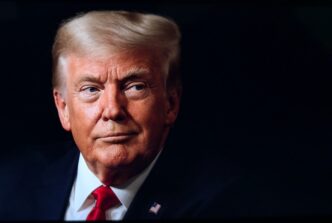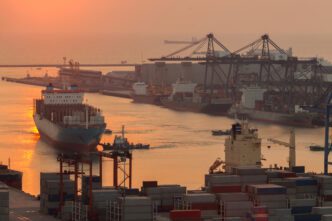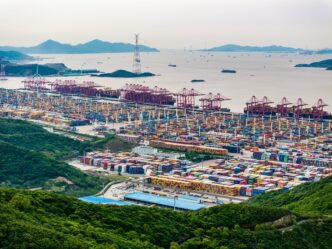President Donald Trump’s implementation of tariffs and his strategy to manage interest rates and the US dollar could significantly damage both the US and global economies, according to economic experts. This approach is expected to disrupt the world order by isolating the US from its allies, detracting from its global financial and diplomatic commitments.
Historical analysis shows that tariffs have repeatedly harmed economic performance. The article examines the two major globalization waves, highlighting how tariffs interrupted these periods of growth. The first wave began in the mid-19th century and lasted until World War I, while the second started post-World War II and ended with the 2008-09 financial crisis. Experts project that average tariffs will settle between 12% and 14%, potentially causing a mild recession and a slight reduction in the US’s long-term economic potential. Restoring diplomatic normalcy might require years of consistent behavior from the US, which appears unlikely during Trump’s presidency.
Ignoring History’s Warning
Two Waves of Growth, Interrupted by Tariffs
Projected Economic Fallout
Projected Average Tariff Rate
Potential Consequences
The Long Road to Diplomatic Recovery
President Trump’s advocacy for tariffs, believing they will enhance government revenues and address trade deficits, is deemed unrealistic. In the 19th century, tariffs were a significant revenue source when the government’s financial footprint was smaller and income taxes were not yet established. Today, such policies would likely hurt the economy without aiding deficit financing.
Furthermore, Trump’s aspirations to revert to a 19th-century manufacturing economy are criticized for ignoring technological advancements and the US’s strengths in high-tech services. His policies overestimate US leverage, overlook potential retaliations, and ignore the adverse consequences of alienating allies.
The first globalization era was marked by the UK’s free-trade movement, seen in the repeal of the Corn Laws and the Cobden-Chevalier Treaty. The US benefited from global trade during its industrial revolution despite running trade deficits, supported by capital inflows. The second wave saw the US promoting global trade and capital flows, including efforts like the General Agreement on Tariffs and Trade and the World Bank. China’s rise as a manufacturing hub and its trade surplus with the US have been a focal point of Trump’s tariffs.
Protectionist policies from countries like India and Argentina in previous decades resulted in economic stagnation. President Trump’s tariff policies and potential interventions in currency markets challenge free-market principles. His conflicting desires for the US dollar and Federal Reserve policies could increase market volatility. The proposed reduction in subsidies to European defense and financial initiatives in developing countries could alter the global landscape and further isolate the US.
Trump’s tariffs have already disrupted global supply chains, leading to foreign retaliation. This disruption is expected to have a more negative economic impact than comparable corporate tax increases. Economic uncertainty has risen, affecting consumption and industrial production, while concerns about US government debt and credibility persist.
Despite potential easing of tariffs and willingness to negotiate lower tariffs with nations like China and Europe, the erratic policy shifts reflect a misunderstanding of free enterprise. These shifts suggest various scenarios, with the highest probability involving tariffs of 12-14% and a moderate economic slowdown. Although these scenarios predict a negative impact, a full return to free trade without barriers remains the most beneficial economic outcome. The path to diplomatic normalization appears to be a long-term endeavor, contingent on future US policies.








